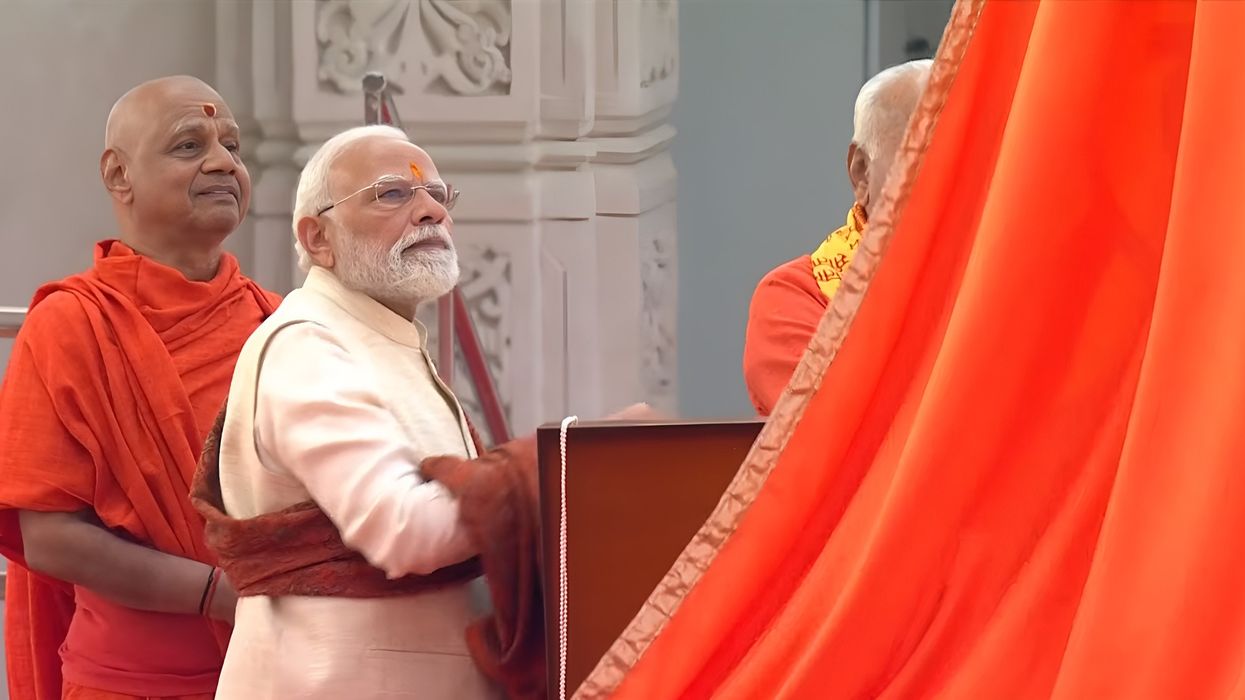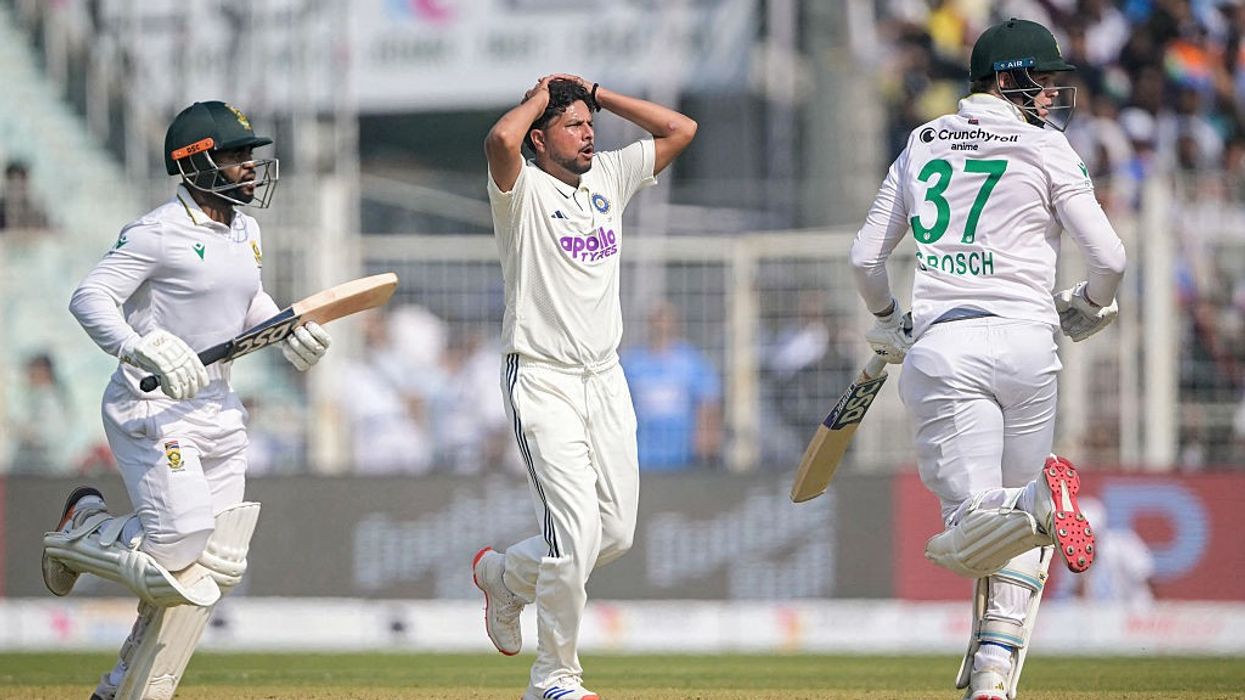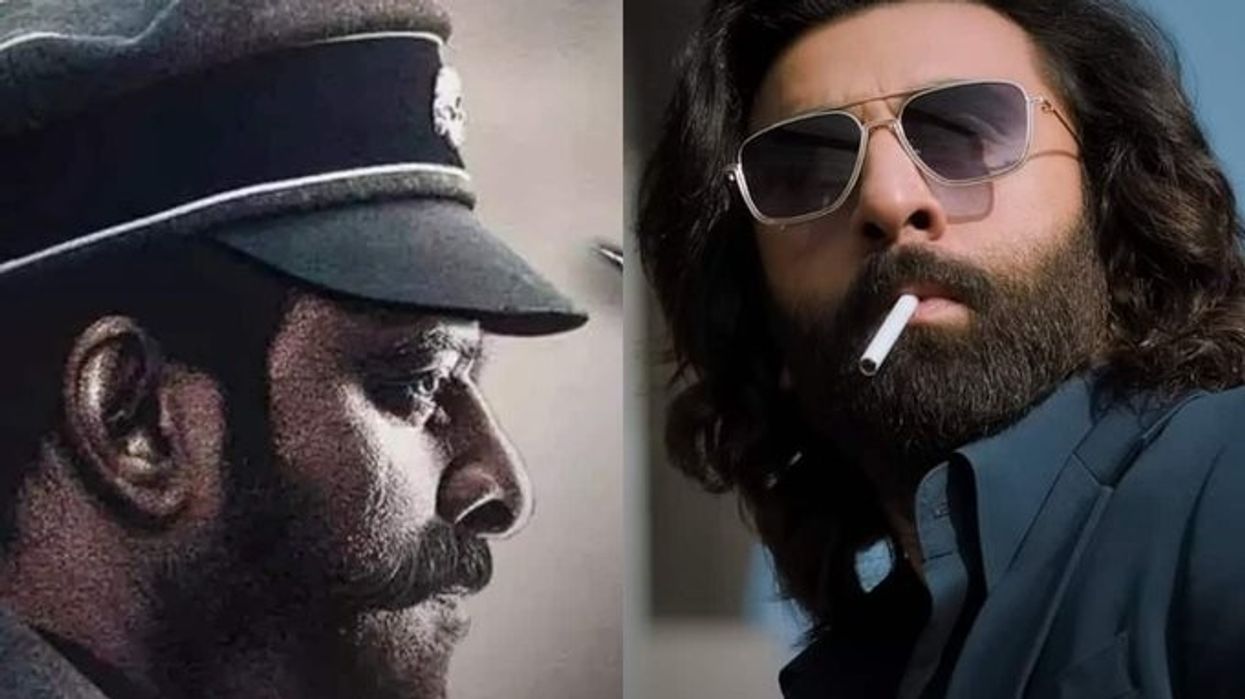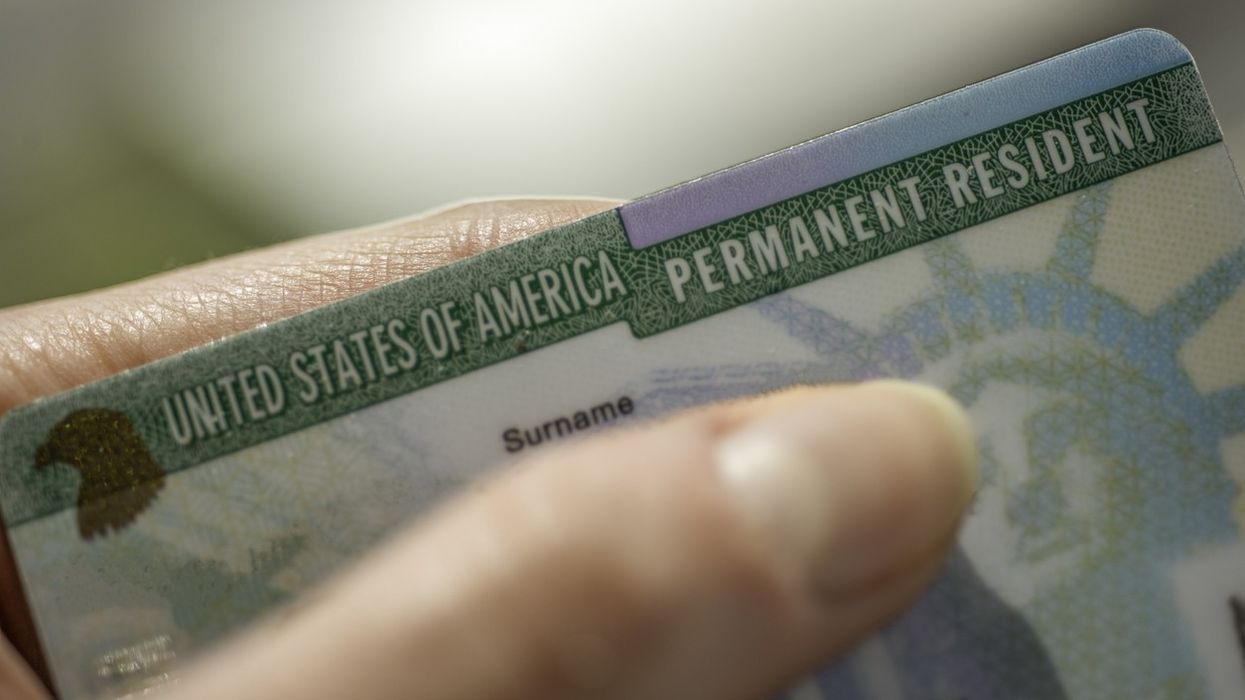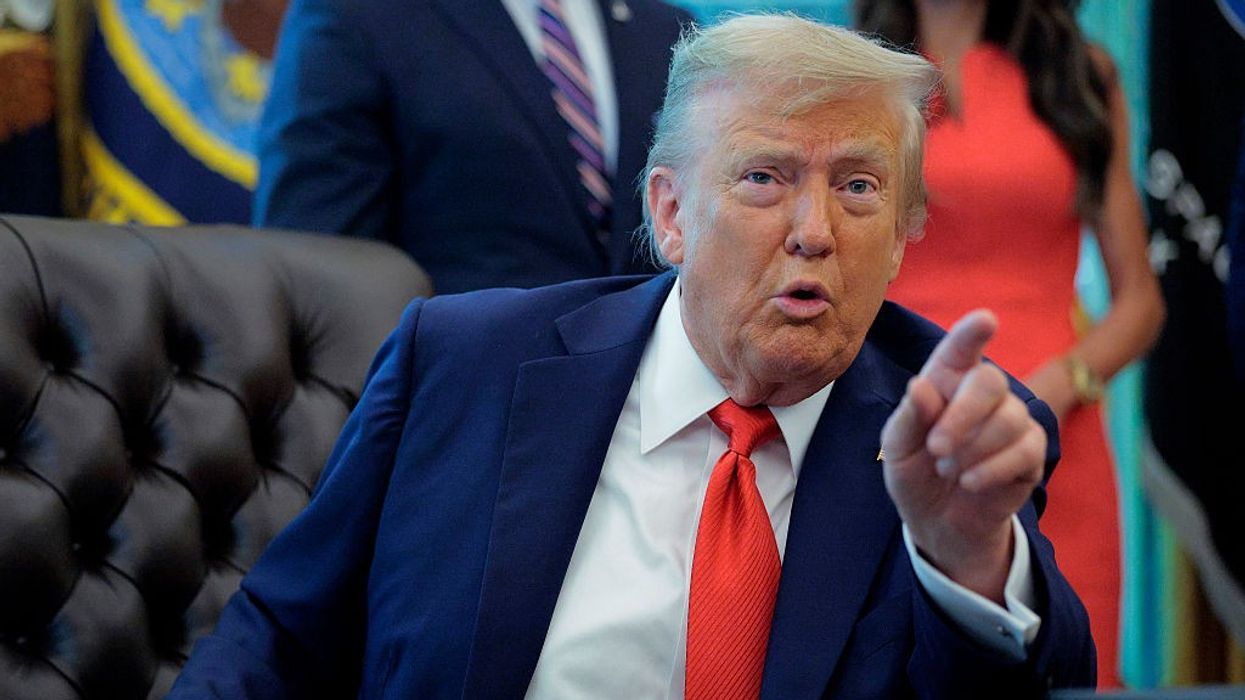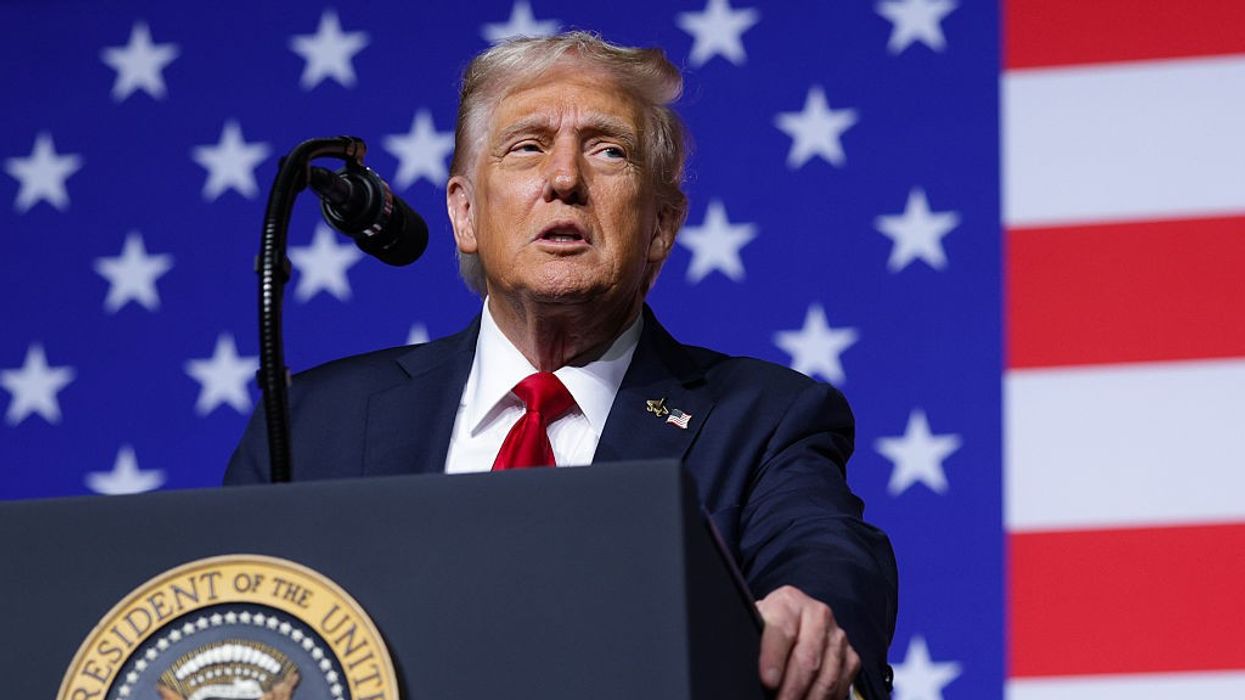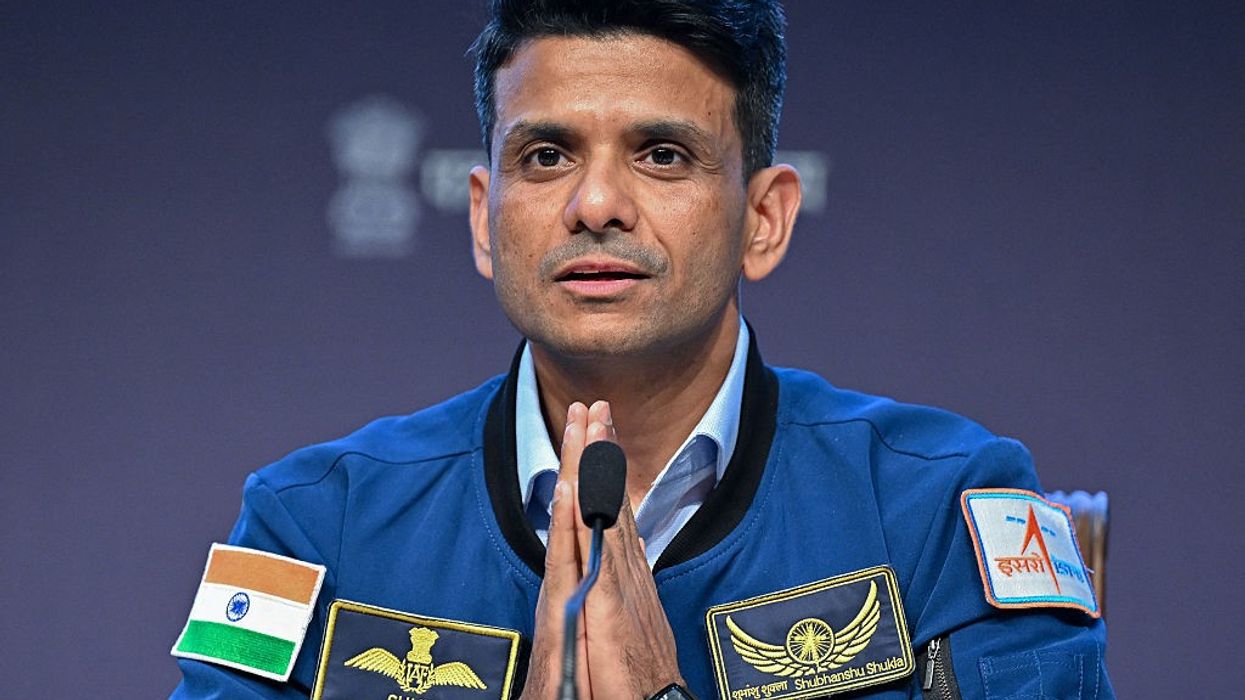Highlights:
- PM Modi hoisted the saffron Dharma Dhwaj marking the completion of Ram Temple construction.
- Ceremony attended by RSS chief Mohan Bhagwat, UP Governor Anandiben Patel, and CM Yogi Adityanath.
- Thousands of devotees gathered in Ayodhya amidst heightened security and devotional fervour.
- Yogi Adityanath called the event the beginning of a “new era” symbolising faith and national pride.
- Temple complex features intricate carvings from the Ramayana and bronze cultural depictions.
Indian prime minister Narendra Modi on Tuesday (25) ceremonially hoisted the saffron Hindu flag at the Ram Temple in Ayodhya, symbolising the completion of the temple’s long-awaited construction. The ceremony, deeply rooted in religious tradition, marked a significant cultural moment for millions of devotees across India. The event was attended by RSS chief Mohan Bhagwat, Uttar Pradesh Governor Anandiben Patel, and Chief Minister Yogi Adityanath.
The Hindu flag, Dharma Dhwaj — a right-angled triangular flag, 10 feet in height and 20 feet in length, features the image of a radiant Sun representing Lord Ram’s valour, an ‘Om’, and the sacred Kovidara tree. As the flag ascended atop the towering temple structure, chants of “Siyawar Ramchandra ki Jai” and “Jai Shri Ram” resonated across the city, capturing the emotional intensity of the moment.
Addressing the gathering, Modi described the ceremony as a monumental event in India’s cultural journey. “Today, the city of Ayodhya is witnessing another tipping point in India’s cultural consciousness. This moment of flag hoisting, celebrating the pinnacle of the Shri Ram Janmabhoomi Temple, is unique and ethereal,” he said.
Uttar Pradesh chief minister Yogi Adityanath echoed this sentiment and announced that the event signified the beginning of “a new era.” He noted that the Ram Temple stands as a symbol of the faith, respect, and self-pride of 140 crore Indians. Highlighting the coincidence of the ceremony with Vivah Panchami, he emphasised the spiritual significance and historical fulfilment felt by devotees. “The saffron flag hoisted at Shri Ram Mandir is also a symbol of religion, dignity, truth, justice, and national values. We are witnessing a New India, where development and heritage exist in perfect synergy,” he added.
Earlier in the day, Ayodhya witnessed a massive influx of devotees who gathered well before sunrise. The temple town echoed with devotional chants as seers and pilgrims described the Dhwaj Arohan ceremony as a moment of historic achievement after decades of struggle and devotion.
The city was placed under a comprehensive security cover ahead of the Modi’s visit. A deployment of 6,970 personnel — including ATS commandos, NSG snipers, cyber experts, anti-drone units as well as specialised technical and surveillance teams — ensured a fortified environment. Key zones within the temple complex were monitored by bomb squads, dog squads, rapid response teams, and fire units. Senior officers oversaw crowd management, explosive detection, VVIP movement, and emergency systems.
During his visit, Modi also offered prayers at the Ram Darbar Garbh Grah and the Ram Lalla Garbh Grah. He further visited the Saptmandir, Sheshavtar Mandir, and the Mata Annapurna Temple. The expansive temple complex showcases 87 carved stone episodes from the Valmiki Ramayana on the outer walls and 79 bronze renderings of cultural themes along the enclosure.
